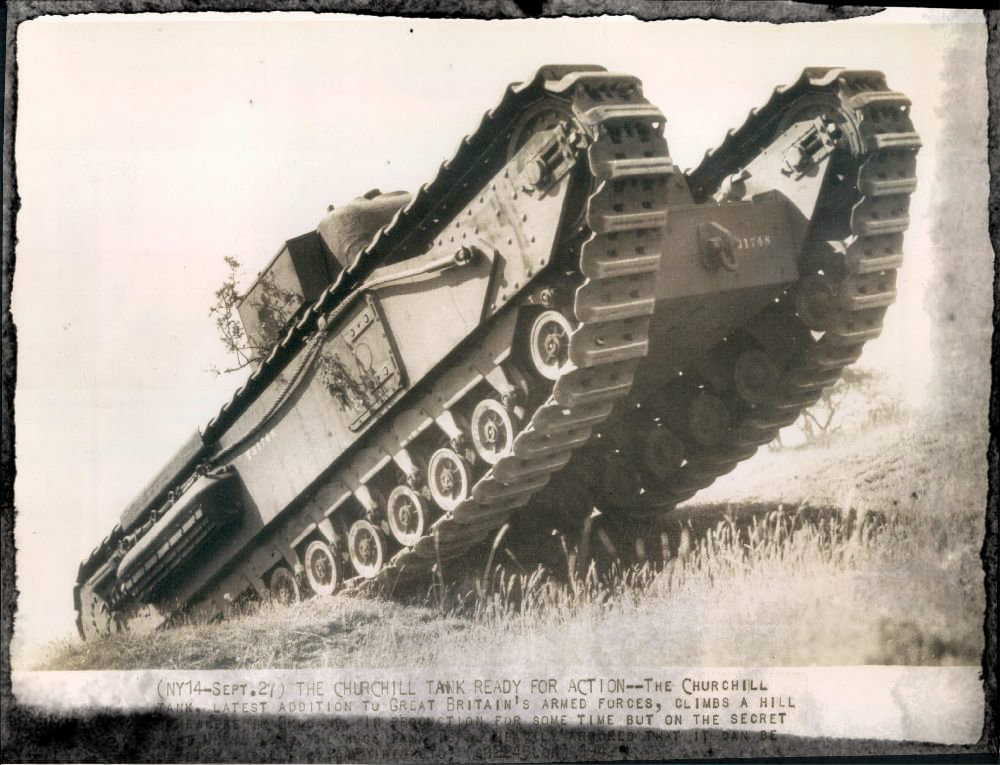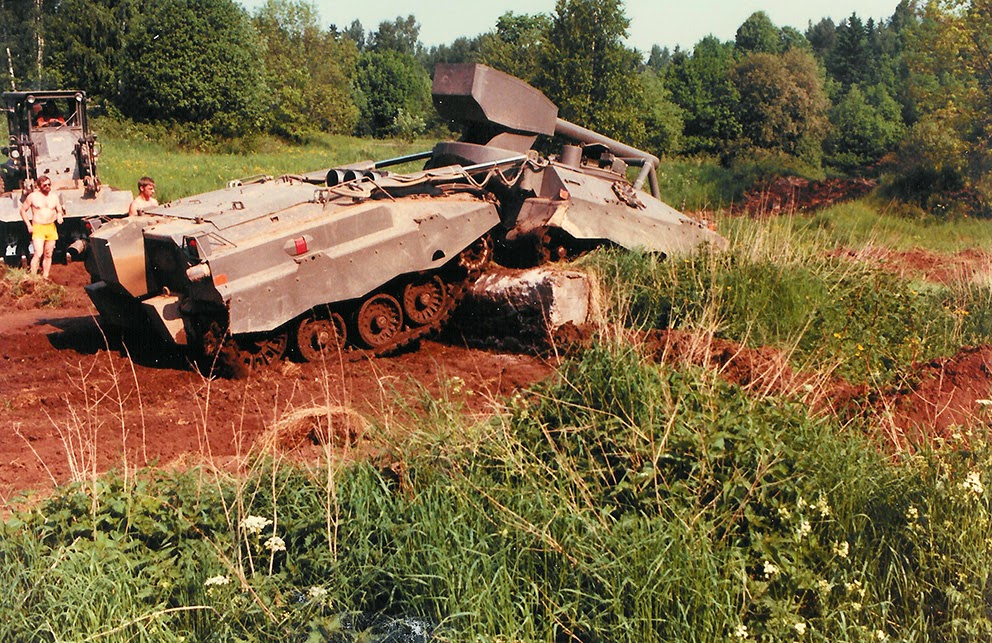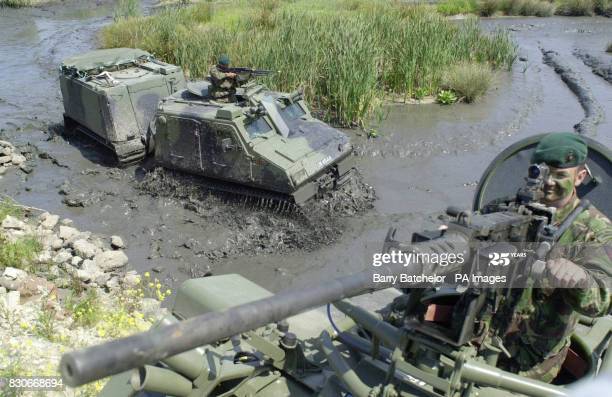There are indeed some advantages to having multiple treads.
One big advantage is in the geometry. With two treads, the tank's pitch (the angle between the vehicle's nose and the horizontal) is on a line tangent to the ground underneath the vehicle's center of mass. On mostly level ground, this means nothing. When the ground changes elevation suddenly, though, it can become a problem. As an example, here's what a two-tread tank looks like coming over a hill.

The tank's pitch is still at an angle as if it was on the hillside, even though the ground has already flattened out. This has a number of problems. The tank has limited traction with half its treads in midair. The less-armored underbelly is exposed to enemy fire. The driver is looking at the sky and can't see what's directly in front of him. The main cannon can't adjust very much in the vertical direction, so large changes in pitch have a major impact on where you can and cannot fire. After the tank's center of mass crests the hill, the front end comes slamming down on the ground. That's not good for your suspension, and even worse for the poor occupants who are suddenly thrown 8-10 feet downward while stuck in a cramped metal can. These geometric issues grow worse as tanks grow larger and the distance between their center of mass and the end of the tank increases.
If instead you had four treads instead of two, you can handle terrain changes much better. Each of the four treads can be at a different angle. This sets the tank's pitch roughly equal to the average of the pitches of the individual treads (the geometry is actually a lot more complicated than that, but it's close enough for discussion purposes). In the photo above, a four-treaded tank would have its front treads flat on the hilltop and the body of the tank would be at half the angle shown. Instead of slamming down after cresting the hill, the tank would gradually level out since all four treads would remain in contact with the ground the entire time.
There is a drawback here, though. Imagine in that photo that the hill was shaped like an inverted 'V'. After the tank topped the hill, it immediately faced a steep downward slope. A four-treaded tank could potentially get stuck high-centered on the top of such a hill, the same as a truck might do. A two-treaded tank can't get high-centered so it would continue unimpeded. It would be an absurdly unpleasant ride for anyone inside, but it wouldn't get stuck.
Another potential advantage I've heard of for multi-treaded vehicles is regarding tread wear. The wheels at the front and back corners keep the tread in tension. Even as far back as da Vinci, it was known that a shorter length of cable can generally withstand more tensile stress than a longer cable. Having several smaller treads means less tread is held in tension, resulting in fewer stress-related failures. Some of the photos in the other answers show an additional top wheel that makes the tread follow a triangle pattern, further reducing the amount of tread held in tension.
Another advantage is that tracked vehicles have a separate motor for each tread. As tanks grow in size, they will at some point become so heavy that there's no practical way to propel them using only two motors (the motors become too big for the chassis, or they require more fuel than you can carry). Having more treads means you can have more motors. Each of those motors can be much smaller than the motors in a two-treaded vehicle. This design can be cheaper, more fuel-efficient, and can deliver more overall power. Many wheeled vehicles designed for pulling extreme loads (like the Soviet MAZ-7907) use a similar one-motor-per-wheel approach in order to generate enough power.













